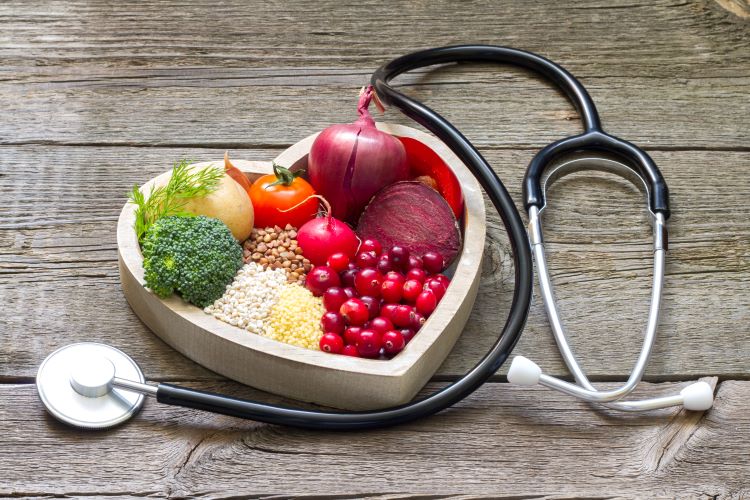The Ultimate Guide to Healthy Eating for Joint Pain Relief
Explore the best and worst foods for managing joint pain in this comprehensive guide. Discover how incorporating specific foods into your diet can help alleviate discomfort and promote joint health. Make informed choices to support your well-being with this expert-backed resource.

What are the best foods for reducing joint pain?
When it comes to joint pain relief, certain foods can be powerful allies. Omega-3 fatty acids, found in fatty fish like salmon, mackerel, and sardines, are known for their anti-inflammatory properties. These healthy fats can help reduce joint inflammation and stiffness. Additionally, colorful fruits and vegetables, particularly berries and leafy greens, are rich in antioxidants that combat oxidative stress and inflammation in the body.
Whole grains, such as brown rice and quinoa, provide essential nutrients and fiber that support overall health and may help manage weight – a crucial factor in reducing stress on joints. Nuts and seeds, especially walnuts and chia seeds, offer a combination of omega-3s, vitamin E, and other anti-inflammatory compounds that can benefit joint health.
Which foods should be avoided to prevent joint inflammation?
While some foods can help alleviate joint pain, others may exacerbate inflammation. Processed foods high in trans fats and refined sugars are major culprits. These include many packaged snacks, baked goods, and fast food items. Excessive consumption of red meat, particularly processed meats like bacon and sausages, has been linked to increased inflammation in the body.
Dairy products can be problematic for some individuals, as they may trigger inflammatory responses. However, this can vary from person to person. Nightshade vegetables, such as tomatoes, potatoes, and eggplants, contain compounds that may increase joint pain in sensitive individuals, though scientific evidence is mixed on this topic.
How can incorporating anti-inflammatory spices benefit joint health?
Spices aren’t just flavor enhancers; many have potent anti-inflammatory properties that can aid in joint pain relief. Turmeric, with its active compound curcumin, is renowned for its ability to reduce inflammation and has been used in traditional medicine for centuries. Ginger is another powerful anti-inflammatory spice that can help alleviate joint pain and stiffness.
Other beneficial spices include cinnamon, which may help regulate blood sugar levels and reduce inflammation, and garlic, which contains compounds that can suppress inflammatory enzymes. Incorporating these spices into your daily cooking can not only enhance the flavor of your meals but also contribute to better joint health over time.
What role does hydration play in managing joint pain?
Proper hydration is often overlooked in joint health, but it plays a crucial role. Water helps lubricate joints and flush out toxins that may contribute to inflammation. Aim to drink at least 8 glasses of water per day, and consider incorporating hydrating foods like cucumbers, watermelon, and celery into your diet.
Herbal teas, particularly those made with anti-inflammatory herbs like chamomile or green tea, can be excellent additions to your hydration routine. They not only contribute to your daily fluid intake but also provide antioxidants that support joint health. However, be mindful of sugary beverages and alcohol, as these can promote inflammation and dehydration.
Are there specific dietary patterns that promote joint health?
In the United States, certain dietary patterns have shown promise in promoting joint health and reducing inflammation. The Mediterranean diet, rich in fruits, vegetables, whole grains, lean proteins, and healthy fats, has been associated with reduced joint pain and improved overall health. This eating pattern emphasizes foods that are naturally anti-inflammatory and nutrient-dense.
The DASH (Dietary Approaches to Stop Hypertension) diet, originally designed for heart health, has also shown benefits for joint pain. Its focus on low-sodium, high-potassium foods can help reduce inflammation and improve overall health. Plant-based diets, when well-balanced, can also be beneficial for joint health due to their high antioxidant content and emphasis on whole foods.
How can supplements complement a joint-healthy diet?
While a balanced diet should be the foundation of joint health, certain supplements can provide additional support. Glucosamine and chondroitin are popular supplements that may help reduce joint pain and improve function, particularly in individuals with osteoarthritis. Omega-3 supplements, derived from fish oil or algae, can be beneficial for those who don’t consume enough fatty fish.
| Supplement | Potential Benefits | Recommended Daily Dose |
|---|---|---|
| Glucosamine | May reduce joint pain and improve function | 1,500 mg |
| Chondroitin | Can help maintain cartilage health | 800-1,200 mg |
| Omega-3 (Fish Oil) | Reduces inflammation and joint pain | 1,000-2,000 mg |
| Turmeric/Curcumin | Potent anti-inflammatory effects | 500-2,000 mg |
| Vitamin D | Supports bone health and immune function | 600-800 IU |
Prices, rates, or cost estimates mentioned in this article are based on the latest available information but may change over time. Independent research is advised before making financial decisions.
It’s important to note that while these supplements are generally considered safe, they can interact with medications or have side effects. Always consult with a healthcare professional before starting any new supplement regimen, especially if you have existing health conditions or are taking medications.
In conclusion, adopting a joint-healthy diet can be a powerful tool in managing and potentially reducing joint pain. By incorporating anti-inflammatory foods, staying hydrated, and considering beneficial dietary patterns, you can support your joint health naturally. Remember that consistency is key, and combining a healthy diet with regular exercise and proper medical care can lead to the best outcomes for joint pain relief and overall well-being.
This article is for informational purposes only and should not be considered medical advice. Please consult a qualified healthcare professional for personalized guidance and treatment.




